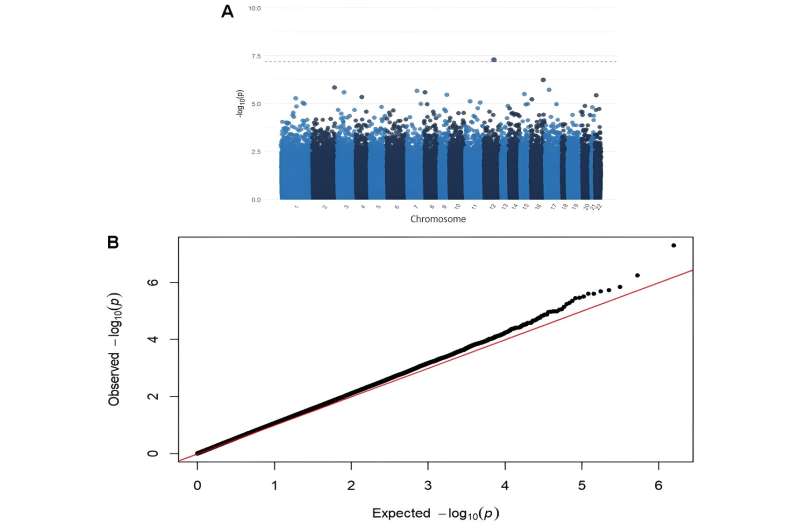This article has been reviewed according to Science X's editorial process and policies. Editors have highlighted the following attributes while ensuring the content's credibility:
fact-checked
proofread
Study finds association between neighborhood deprivation and DNA methylation in an autopsy cohort

A new research paper was published in Aging, titled, "The association between neighborhood deprivation and DNA methylation in an autopsy cohort."
Previous research has found that living in a disadvantaged neighborhood is associated with poor health outcomes. Living in disadvantaged neighborhoods may alter inflammation and immune response in the body, which could be reflected in epigenetic mechanisms such as DNA methylation (DNAm).
In this new study, researchers from Emory University, University of British Columbia, BC Children's Hospital Research Institute, Centre for Molecular Medicine and Therapeutics, and Atlanta VA Medical Center used robust linear regression models to conduct an epigenome-wide association study examining the association between neighborhood deprivation (Area Deprivation Index; ADI), and DNAm in brain tissue from 159 donors enrolled in the Emory Goizueta Alzheimer's Disease Research Center (Georgia, U.S.).
"We found one CpG site (cg26514961, gene PLXNC1) significantly associated with ADI after controlling for covariates and multiple testing (p-value = 5.0e-8)," write the researchers.
Effect modification by APOE ε4 was statistically significant for the top ten CpG sites from the EWAS of ADI, indicating that the observed associations between ADI and DNAm were mainly driven by donors who carried at least one APOE ε4 allele. Four of the top ten CpG sites showed a significant concordance between brain tissue and tissues that are easily accessible in living individuals (blood, buccal cells, saliva), including DNAm in cg26514961 (PLXNC1).
This study identified one CpG site (cg26514961, PLXNC1 gene) that was significantly associated with neighborhood deprivation in brain tissue. PLXNC1 is related to immune response, which may be one biological pathway to how neighborhood conditions affect health.
"The concordance between brain and other tissues for our top CpG sites could make them potential candidates for biomarkers in living individuals," the authors conclude.
More information: Lindsay Pett et al, The association between neighborhood deprivation and DNA methylation in an autopsy cohort, Aging (2024). DOI: 10.18632/aging.205764




















